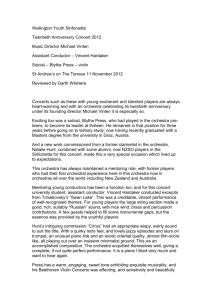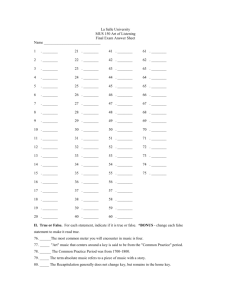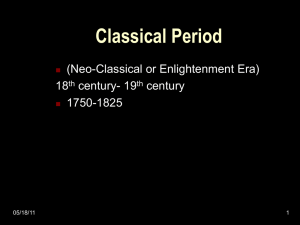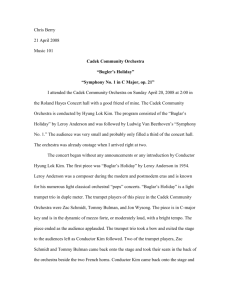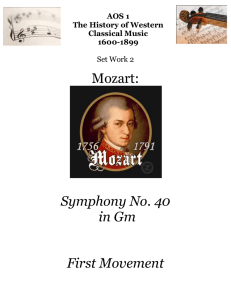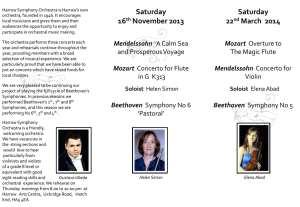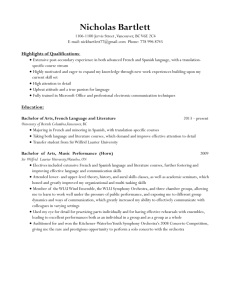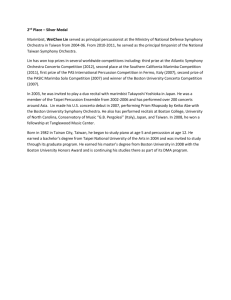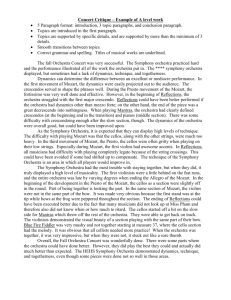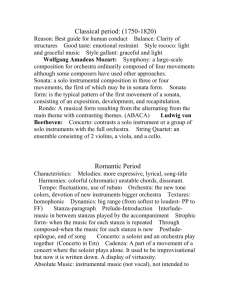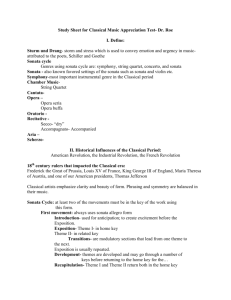Set work 2 MOZART- Symphony No. 40 1st Mvt.
advertisement
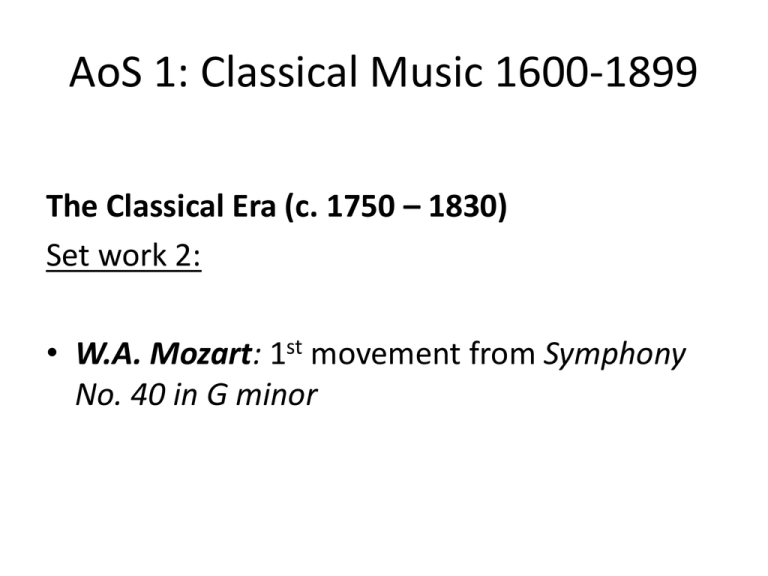
AoS 1: Classical Music 1600-1899 The Classical Era (c. 1750 – 1830) Set work 2: • W.A. Mozart: 1st movement from Symphony No. 40 in G minor The usual classical orchestra • • • • • Larger than a Baroque orchestra Larger string section (More players) More woodwind instruments (often pairs) Often has 2 trumpets and 2 timpani drums The orchestra would probably been about 30-40 players altogether depending on the size of the string section. Mozart’s Orchestra for ‘Symphony No. 40 in G minor’ • • • • • • • • • • Violins 1 Violins 2 Violas ‘Cellos Basses 1 flute 2 oboes 2 clarinets 2 bassoons 2 horns (8 players) (6 players) (4 players) (4 players) (2 players) • BUT there are no trumpets or timpani in this piece. Features of the classical style • Graceful melody lines • Regular phrases, often of 8 bars (4 + 4) - This is called Periodic phrasing • The Melody dominates the texture • Functional harmony; cadences important • Musical structures have a sense of symmetry and balance • Contrasts in keys, melodies and dynamics • Standard orchestra Symphony • A large – scale piece for orchestra Usually in 4 movements • 1st movement – Fast tempo – Sonata form structure • 2nd mvt. Slower tempo • 3rd mvt. Minuet and Trio structure • 4th mvt. Fast tempo General Points for 1st mvt of Symphony No. 40 by Mozart • Tempo -The 1st movement is marked molto allegro (very fast). It is so fast that the music has a feeling of ‘two in a bar’ • Time signature - The 1st movement is in 4/4 time • Key signature -The home key is G minor • Dynamics – The piece begins quietly – this is unusual for the time. The volume of the music changes dramatically throughout. • Structure – the movement is in sonata form • Instruments – usual classical orchestra but no trumpets or timpani Structure - Sonata Form Symphony No.40 in G minor: 1st Mov – W. A. Mozart 1st Subject 1. Exposition Bars 1-100 (REPEATED) Key: 2. Development Bars 101-164 Bridge Passage B 1 – 20 B20-44 G minor moving toward (tonic) 22ndndSubject Subject Codetta Codetta BB 44 44 –– 72 72 B 73-100 B 73-100 B B major major (relative (relativemajor) major) The music of the development section is based entirely on the opening figure of the 1st subject. The music moves through various keys before finishing on the dominant 7th chord ( D7) leading back to.... Not just a direct repeat of the exposition. The bridge passage is extended and the coda is far more developed. 3. Recapitulation 1st Subject Bars 164-299 B 164-184 Key: Bridge Passage B184-227 nd Subject Codetta 2nd2Subject Codetta B 227-260 B 260-299 B 260-299 B 227-260 minor G minor ....staying in ....... GGminor (tonic) (tonic)
